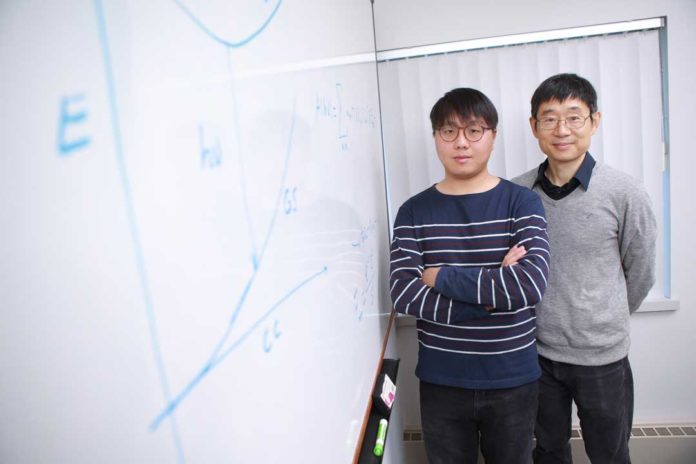Scientists at the University of Toledo have discovered a single material that could produce white light and may also lead to a new frontier in lighting. It has high efficiency and thus can potentially replace the current phosphors used in LED lights.
Dr. Yanfa Yan, professor of physics at UT, said, “Together, cesium, silver, indium, and chloride emit white light, but the efficiency is very low and not usable. When you incorporate sodium, the efficiency increases dramatically. However, when sodium concentration reaches beyond 40 percent, side effects occur, and the white light emission efficiency starts to drop below the peak of 86 percent.”
Scientists conducted theoretical calculations that revealed why the new material created through experiments by scientists produces high-efficiency white light.
This lead-free double perovskite exhibits efficient and stable white-light emission via self-trapped excitons. Scientists then alloyed sodium cations into Cs2AgInCl6 to break the dark transition by manipulating the parity of the wavefunction of the self-trapped exciton and reducing the electronic dimensionality of the semiconductor.
This leads to an increase in photoluminescence efficiency by three orders of magnitude.
Dr. Jiang Tang at Huazhong University of Science and Technology in China said, “It was a wonderful experience working with Dr. Wang and Dr. Yan. Their professional theoretical simulation helps to reveal the emission mechanism of this miracle material. This lead-free all-inorganic perovskite not only emits stable and efficient warm-white light that finds itself useful for solid-state lighting but also shows as an encouraging example that lead-free perovskites could even perform better than their lead cousins.”
Dr. Sanjay Khare, professor and chair of the UT Department of Physics and Astronomy, said, “Their work is truly impressive. Emission of white light from a single material is likely to open a whole new field in optoelectronics.”
Dr. Yanfa Yan, professor of physics at the University of Toledo, said, “Due to its high efficiency, this new material can potentially replace the current phosphors used in LED lights – eliminating the blue-tinged hue – and save energy. More research needs to be done before it can be applied to consumer products, but the ability to reduce the power that bulbs consume and improve the color quality of light that the bulbs emit is a positive step to making the future more environmentally friendly.”
Journal Reference
- Luo, J., Wang, X., Li, S. et al. Efficient and stable emission of warm-white light from lead-free halide double perovskites. Nature 563, 541–545 (2018). DOI: 10.1038/s41586-018-0691-0
